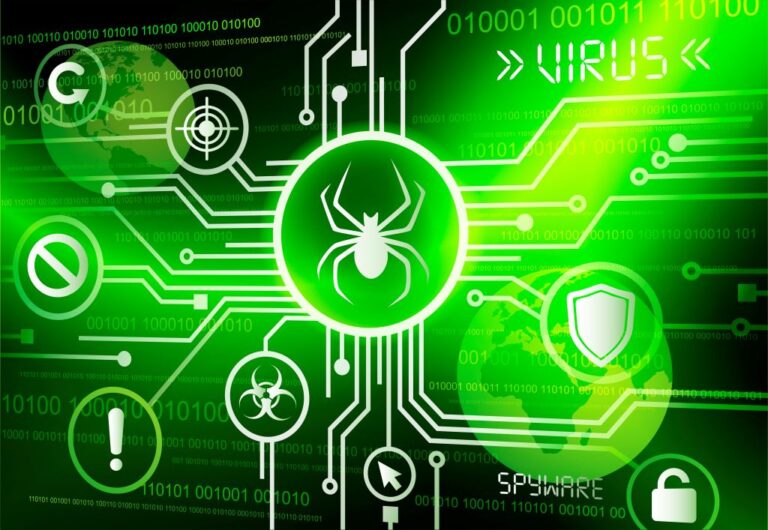What Are the Main Types of Cyber Threats?

Imagine you’re playing a game with lots of players online. Some players just want to have fun like you, but a few others might try to trick you, mess with your game, or steal things. Cybersecurity is a bit like protecting yourself in that game, but instead of just games, it’s about protecting computers, phones, and all the things we do online. When people try to mess with your stuff or trick you online, it’s called a cyber threat. There are different types of cyber threats, just like there are different kinds of bad guys in games, each with their own tricks. Let’s explore some of the main ones!
Viruses and Malware
Think of viruses in real life—the kind that makes people sick. A virus can spread from one person to another. In the online world, there are also “viruses” that spread from one computer to another. When a computer catches a virus, it can make the computer sick by slowing it down or even breaking parts of it.
These viruses, along with other bad programs, are called malware. Malware is short for “malicious software,” which means it’s a kind of software designed to cause harm. Some malware can spy on you, some can lock your files, and some can make your computer do things you don’t want it to. Viruses are just one kind of malware, but there are others too. Let’s look at a few!
🔸Worms: A worm is like a virus that doesn’t need any help to spread. It copies itself and moves from one computer to another all on its own.
🔸Trojan Horses: Imagine a present wrapped up nicely that actually has something bad inside. A trojan horse looks like a safe program, but once you open it, it can harm your computer.
Phishing
Phishing is a sneaky trick that cybercriminals use to steal personal information, like passwords or credit card numbers. They might pretend to be someone you trust, like a friend or even a bank, and send you a message asking for your information.
Phishing is like someone pretending to be your friend in a game and asking for your password so they can take your stuff. But instead of in a game, phishing happens in emails, text messages, or fake websites that look very real. If you give them the information, they can use it to steal from you or pretend to be you.
Ransomware
Imagine you’re working on a big project in a game, and suddenly someone locks it up and says, “If you want your project back, you have to give me all your points!” That’s what ransomware does in real life, but it locks up files on your computer instead.
When ransomware infects a computer, it encrypts (or scrambles) files so you can’t open them. Then, it demands a ransom, which is money, to get your files back. Even if you pay, there’s no guarantee you’ll get your files back! That’s why protecting your computer from ransomware is very important.
Spyware
Have you ever felt like someone was watching you while you were playing a game? Spyware is like a hidden camera on your computer. When spyware infects a device, it secretly watches what you’re doing. It can see what websites you visit, what you type, and even record your passwords.
People use spyware to get information about you without you knowing. It can be used to steal your identity, spy on what you’re doing, or even steal money. So, spyware is not something you’d want lurking on your devices!
Denial-of-Service (DoS) Attacks
Imagine you’re at a theme park, and there’s a popular ride. But then, a big group of people come and stand in line just to block everyone else from riding. A Denial-of-Service (DoS) attack is kind of like that.
In a DoS attack, cyber attackers flood a website or service with so much fake traffic (like fake visitors) that the real users can’t get in. Sometimes, these attacks are done by more than one computer working together, and it’s called a Distributed Denial-of-Service (DDoS) attack.
These attacks don’t steal your information, but they make it hard to use websites and services you rely on, which can be really frustrating.
Man-in-the-Middle Attacks
Imagine if you sent a message to a friend, but someone stopped the message midway, changed it, and then sent it to your friend without you knowing. A Man-in-the-Middle (MitM) attack is like that!
In this attack, a cybercriminal secretly gets in between your device and the website you’re using. They might spy on what you’re doing or even change the information you send and receive. Man-in-the-Middle attacks are dangerous because they can trick you into thinking you’re talking to the right website or person, but you’re actually talking to the attacker.
SQL Injection
Think of a website as a big library. SQL (Structured Query Language) is like the language used to ask for books in that library. An SQL Injection is when an attacker “injects” (sneaks in) their own questions to the library in a way that tricks it into giving away private information.
This type of attack happens mostly on websites that use databases (special places to store lots of data). If a website doesn’t protect its database well, an attacker can use SQL Injection to get information they shouldn’t have, like usernames and passwords.
Zero-Day Exploits
Imagine you find a new secret passage in a game that no one else knows about. If someone uses that secret passage to cheat, that’s a bit like a Zero-Day exploit.
A Zero-Day exploit happens when cyber attackers find a flaw in a program or system that even the developers don’t know about yet. Since no one knows about it, no one’s had the chance to fix it. Cybercriminals try to take advantage of these flaws to do things like steal information or control the system.
Social Engineering
This type of attack is about tricking people instead of machines. Think of social engineering as someone trying to fool you by pretending to be nice or friendly just to get what they want.
For example, someone might call you pretending to be from a big company and ask for your password. Social engineering attacks rely on tricking you into giving away information, rather than hacking into your computer. These attackers can be very clever and make you think they are trustworthy.
How Can We Stay Safe?
Knowing about these threats helps you understand why it’s important to protect your devices. Here are some simple steps to stay safe:
🔸Use Strong Passwords: Strong passwords are harder for hackers to guess. Try using long, unique passwords for different accounts.
🔸Be Careful with Links: Don’t click on links or open attachments in messages from people you don’t know.
🔸Keep Software Updated: Updates often fix security flaws, so keeping your computer and apps updated helps protect you from attacks.
🔸Install Security Software: Antivirus programs and firewalls help keep bad programs, like malware, out of your system.
🔸Don’t Share Personal Info: Be careful about what you share online. Cybercriminals might use even small pieces of information to trick you.
Remember, cyber threats might sound scary, but with the right knowledge, you can keep yourself and your devices safe. Just like in a game, where learning about each type of enemy helps you defeat them, learning about these cyber threats can help you stay protected online!
featured image Designed by rawpixel.com / Freepik








